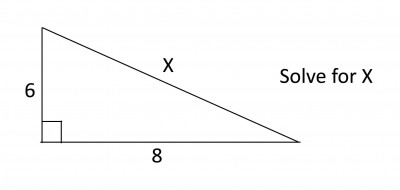Why Singapore’s English Teachers Should Embrace Singlish, Not Fight It
Is it time for Singaporean educators to embrace Singlish as a legitimate learning tool? What the Research […]
Read More
No two learners are alike. Some might thrive on freedom and independence, while others excel with structure and guidance. Leslie Toh from MOE’s Educational Support Branch (ESUB), Curriculum Planning and Development Division and a group of teachers from different schools share how they help Normal (Technical) students appreciate their learning more.
Educating is not only about being able to impart and share knowledge to learners; it is also about being able to identify their learning needs and address them in the appropriate manner. To bring out the best in these learners, teachers first have to understand their young learners and then assist them to take charge of their own learning.
“We have to be aware of these students in terms of their learning attitude, learning capacity and classroom behaviour,” Mdm Judy Lim from Siglap Secondary School says. These include understanding their learning routines and the kinds of learning structures that they need in the classroom to thrive.
Many Normal (Technical) or N(T) students require a lot of learning support from their teachers due to various reasons, such as having short attention span and the inability to absorb information quickly. Part of this learning support also includes creating opportunities for them to participate during lessons and collaborate with their peers.
In providing a positive learning experience for these students, Leslie and Judy, along with two other teachers, embarked on a programme that gives students the appropriate learning structure and guidance.

(From left) Mr Rommel Choong, Mr Leslie Toh, Ms Portia Tan and Mdm Judy Lim believe that teachers play an important role in helping their students develop a sense of ownership in their own learning.
Typically, direct instruction and independent practice prevail in the classroom. “But is there sufficient scaffolding for our students’ learning needs given that they are in the N(T) stream?” Judy asks. And even with additional scaffolding built into this instructional method, it might still not be sufficient.
Based on the theory of Gradual Release of Responsibility, which states that the teacher should shift the responsibility of the learning process from him or herself to that of the learner itself with appropriate scaffolds (Fisher, 2008), MOE ’s Educational Support Branch (ESUB) piloted a structured teaching programme targeted at N(T) students.
“This programme was conducted from Jan 2014 to May 2015 with N(T) students across 7 schools,” Leslie shares. “It has impact on their learning, engagement and relationship with their peers and teachers.”
So how does the programme impact students?
Providing focused instruction is key to student learning. This begins with having a clear purpose for the lesson in terms of content, language and social skills. The crafted content, language and social purpose statements provide focus to both teachers and students for learning throughout the lesson.
Content purpose is similar to lesson objective. For example, the content purpose of a Math lesson is: Interpret and write algebraic expressions and formulate algebraic expressions to represent word problem.
“But even with the content purpose, very seldom do we tell the students what type of specific language and academic terms they will be learning at the end of the lesson,” explains Judy. This is where having language purpose statements will help students as they provide language support as academic terms that they will learn during the lesson such as sum, multiply and subtract are posted and made visible in the classroom.
Lastly, the social purpose statements help outline classroom behaviours that are expected of the students during lessons. It could be as simple as “Raise your hands to ask questions.”
“The teacher will write down all these three purpose statements on the white board and articulate them very clearly to the students,” Judy shares. “They are like layers of scaffolds to help students better appreciate their learning.”
Consider the question in the image below and an explanation of its solution given by Ms Portia Tan, a teacher from Tanglin Secondary School, who is also part of the structured teaching programme:

Today, I am going to think about how to solve for X in this right-angled triangle. You will have to use Pythagoras Theorem: A2 + B2 = C2. After that, you use 62 + 82 = X2. Then you will need to use your calculator to compute this value and finally arrive at the answer of 10.
“While the explanation might be straightforward, it does not provide student with the content information,” Portia says. “This is very much direct instruction only.”
What the above example lacks is appropriate scaffolds to stimulate students’ thinking. To facilitate their understanding, teachers also monitored their own pronoun usage by using less of “you” (very instructional) and more of “I” instead.
A better way to approach the question is to model the teacher’s thinking process, rather than to solve it mechanically. This means that the teacher’s explanation will go as such: I recall that in any right-angle triangle and in order to solve for the unknown side, X in this case, I will have to use the Pythagoras Theorem, A2 + B2 = C2. I recall that what’s important in this formula is that I have to identify the longer side first, which is C. The longer side is always opposite the right angle. In this case, I can substitute C to be my X. and the remaining 2 sides will be 6 and 8, which is A and B respectively.
“Modelling does not only provide students with the content information but also a mental scaffold to allow them to think about the concepts that were taught to them,” Portia explains. “This way, students’ overall understanding of what they have learned may deepen.”
Modelling does not only provide students with the content information but also a mental scaffold to allow them to think about the concepts that were taught to them.
– Portia Tan, Tanglin Secondary School
But even with thoughtful scaffolds like purpose statements and modelling, some students might still misunderstand certain concepts.
Mr Rommel Choong, a Science teacher from Si Ling Secondary School, says that while the rest of the class engage in independent learning, further scaffolding has to be put in place to address those with knowledge gaps.
“We question students on their thoughts and through that, we can identify the conceptual misunderstanding,” Rommel explains. And if a student struggles to explain their thoughts, the teacher will proceed to the next scaffold – prompting them with hints or reminders.
This gives students time to recall their prior knowledge and take ownership of their understanding. “They will feel that they formed the knowledge on their own, and hence, feel a greater ownership in their learning,” he adds.
But if questioning and prompting doesn’t work, then the last scaffold is to give students cue, which is much more direct than prompts. The teacher can simply point to a keyword in the content or language purpose statements to cue them the answer.
“When used in a group setting, questions, prompts and cues might engage our students to a higher level of understanding,” Rommel says.
We question students on their thoughts and through that, we can identify the conceptual misunderstanding.
– Rommel Choong, Si Ling Secondary School
But one cannot simply assume that every student will know how to navigate within a group. Imagine receiving a handout with a Math question with an instruction that reads:
Your team is given 3 minutes to complete the question. You can write your answer on the given blank paper.
“How do you think you will work on that task?” asks Portia. Typically, students will instantly start discussing and attempt to solve it without first taking the time to understand the question thoroughly, she explains.
Now, imagine the same handout, but with a different set of instruction that were thoughtfully crafted:
1) Each of you is to complete the question, and write your answer on the given blank paper. You have 1 minute to provide your answer.
2) Once you are done, discuss with your team members, and agree on a common answer for the question. Your team is given 2 minutes to provide the common answer and also the reason(s) for agreeing to this answer.
“The second handout gives specific time to every individual to think about the question first,” explains Portia, “then engage in a group discussion.” Providing students with specific instructions and individual thinking time can enable an effective discussion and collaboration within the group.
“Besides having a task that provides ample room for discussion, specific instructions are also necessary for us to support the students in their group discussion,” she adds. “If not for such support structure, they might end up discussing in a random manner.”
Structured teaching helps to open up the students’ mind-set and comfort level.
– Portia on how structured teaching can benefit students
It is also important to ensure a safe learning environment for students. Rommel explains that a “safe environment allows them to speak up and share their answers and this helps them form ownership in their learning.”
Part of creating this safe environment is making the effort to not be evaluative of their students during group discussion, which can be achieved by using the question–prompt–cue scaffold.
“Structured teaching helps to open up the students’ mind-set and comfort level,” Portia adds. However, it takes time to build up these students’ confidence level and success definitely doesn’t happen overnight. “Initially, my students were very uncomfortable with structured teaching but gradually they became very willing to share their ideas in class.”
And these teachers’ efforts paid off when they finally see positive learning experiences happening in their own classrooms.